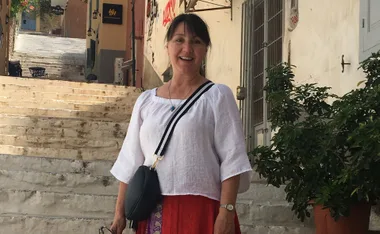Whether you desire a water birth, a home-birth, a drug-free birth or an epidural at the first contraction, the [one desire all mothers have](http://www.aww.com.au/latest-news/news-stories/the-childbirth-myth-1-22059
target=”_blank”) in common is to do the best they can for their baby.
Everybody desires the most stress-free birth possible for all parties concerned. Some women take stress-free to a whole new level by embracing the holistic, energetic, some believe spiritual practice of lotus birth.
Lotus birth is the process of non-severance of the umbilical cord. In other words, you leave the placenta attached to the baby until it falls off naturally.
The philosophy behind the lotus birth is that a child has spent nine months in the womb with their placenta and lopping it off the second they arrive may cause them pain and distress.
By allowing the placenta to fall off naturally, you are allowing your baby to gently enter the world with no scary scissors in sight, and absorb the last vestiges of goodness from the placenta.
It appears to be a fairly polarising subject with some women recoiling in horror at the thought of carrying their placenta for the seven-14 days it takes to fall off, while other embrace the concept of giving their baby the gift of a supremely gentle start.
Kim Vale’s first encounter with a placenta was when it was attached to her sister’s newborn during her lotus birth.
“I didn’t really know much about placentas to tell the truth so it was quite a shock! You couldn’t see it but just knowing it was there,” she recalls.
When it came time for Kim to have her own baby, she and her husband had done extensive research online and decided keeping the umbilical cord intact was something they wanted to try themselves.
“It was a little awkward to manoeuvre the baby. I was a bit concerned if I dropped the placenta would the baby would be yanked from my arms?” said Kim. “We were so cautious and delicate and in a sense I think that helped our baby transition into the world quite smoothly. We weren’t rushing about with her.”
Kim found it also stopped many people from manhandling her newborn.
“When you tell people the placenta is still attached there is no pressure whatsoever to hand the baby over to anyone else,” she laughs.
Kim is now considering placenta encapsulation (eating the placenta in pill form) for her second child, although she loved the experience that lotus birth gave her family.
“It gave me peace of mind. We found she was really calm after the birth. She didn’t actually cry for a very long time, and I just found it a really gentle experience.”
The concept of a gentle experience for your baby is hard to dispute but the logistics of lugging a slab of meat around with your newborn can be a little confronting at best.
Shamanic midwife and holistic psychologist, Avalon Darnesh, is a great advocate for lotus birthing.
“You can provide a gentle beginning to life, rather than rushing in with scissors to chop the cord. You can provide a gentle quiet space for the baby to gradually adjust to life outside the womb.”
Quiet is good, especially in the “fourth trimester” with a tiny baby, but what about that stinky old placenta?
“You need to care for it and there is maintenance required to care for it,” says Avalon. “You can support the placenta to dehydrate, so it kind of dries out, so by the time it comes off there is an aroma but it is not rotting.
“I used rosemary, some people use salt because salt helps to preserve it. It’s like ancient cultures preserving meat – Similar thing. You can use rosemary which helps to dry it so you need to be prepared with a good jar of ground dried rosemary.
“When you cover the placenta with that it helps to shrivel and dry out. I also used a few drop of lavender oil to help freshen it because it has an earthy smell. You can also wrap it in a bag if you like, but I don’t like the idea of it rotting in a bag. I prefer to let it dry it out,” explains Avalon.
“The beauty of lotus birth is that it actually encourages me as a mother to slow down, and not be rushing out to the shops. I spend that week just being quiet at home and honouring the fourth trimester,” says Avalon.
The baby and the placenta are the same DNA so it is also thought that even if you don’t leave the cord attached until it falls off, at least having a prolonged cord cutting (until the cord stops pulsing) and then keeping the placenta nearby for a few days can help the baby transition into the world.
“Not a lot of scientific research has been done to substantiate medical benefits of a lotus birth. There is also little to prove the cutting of the cord and the separation of baby and placenta is medically necessary,” says doula from Birthing Brave, Chelle Luke.
“The placenta is an essential organ, its function, just as important to life as baby’s heart,” says Chelle.
“Ancient practices and rituals that honor the placenta and the cord can be found everywhere in traditional and indigenous cultures. These kinds of practices are becoming increasingly popular in our modern society.”
It may not be for everyone, but knowledge and research may demystify this practice and if not normalise it, at least allow us to understand the choices people make for their families.
“Baby is more likely to remain skin to skin with mother (benefits of this are extensive) and mother is more likely to rest and stay at home, even in bed, until the cord comes away at three-10 days. These first precious days recovering from birth, and learning about your baby are essential, difficult and beautiful, and can create treasured memories for many mothers and new families.”
Danielle Colley
*Danielle Colley is a writer, blogger, mum and ice cream afficionado. She is a regular contributor to The Weekly and other online and print publications.
You can see more of Danielle on her blog, Keeping Up With The Holsbys, or her Facebook page facebook.com/keepingupwiththeholsbys.*

.jpg?resize=380%2C285)









